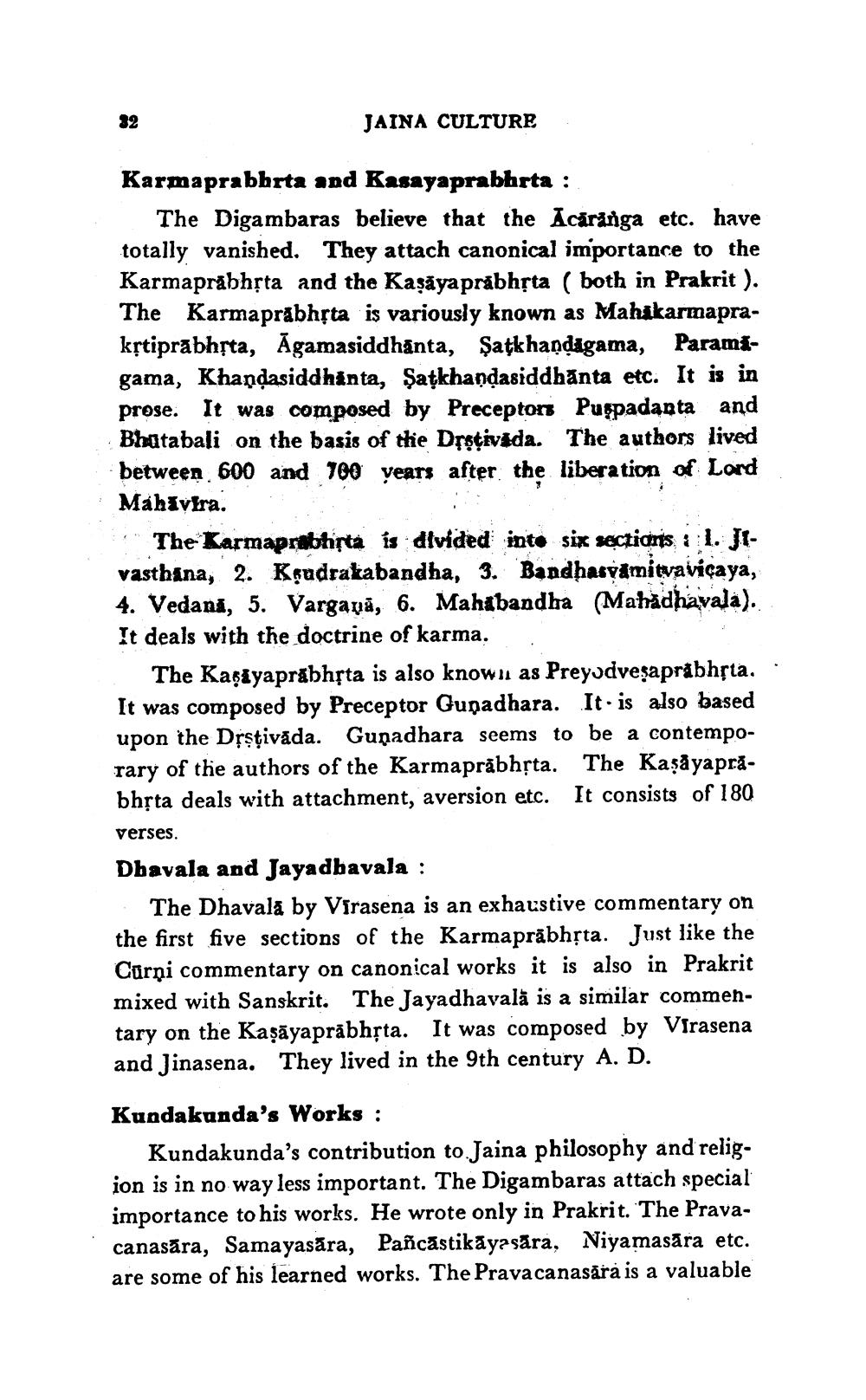________________
JAINA CULTURE
Karmaprabbrta and Kasayaprabhrta :
The Digambaras believe that the Acäränga etc. have totally vanished. They attach canonical importance to the Karmaprabhịta and the Kaşāyaprabhịta ( both in Prakrit ). The Karmaprabhỉta is variously known as Mahakarmaprakstiprābhsta, Āgamasiddhanta, Satkhandigama, Paramsgama, Khandasiddhanta, Şaškhandasiddhanta etc. It is in prose. It was composed by Preceptors Puşpadapta and Bhatabali on the basis of the Drstivida. The authors lived between 600 and 700 years after the liberation of Lord Mahivira.
The Karmaprabhista is divided into six sectionis. 1. JIvasthana, 2. Krudratabandha, 3. Bandhasyåmitvavicaya, 4. Vedana, 5. Vargavā, 6. Mahabandha (Mahadhavala). It deals with the doctrine of karma.
The Kaşiyaprabhșta is also known as Preyodveşaprabhsta. It was composed by Preceptor Gunadhara. It is also based upon the Dșstivāda. Gunadhara seems to be a contemporary of the authors of the Karmaprabhịta. The Kaşåyaprabhịta deals with attachment, aversion etc. It consists of 180 verses. Dhavala and Jayadbavala :
The Dhavala by Virasena is an exhaustive commentary on the first five sections of the Karmaprābhịta. Just like the Cürņi commentary on canonical works it is also in Prakrit mixed with Sanskrit. The Jayadhavalā is a similar commentary on the Kaşāyaprābhsta. It was composed by Virasena and Jinasena. They lived in the 9th century A. D.
Kundakunda's Works :
Kundakunda's contribution to Jaina philosophy and religion is in no way less important. The Digambaras attach special importance to his works. He wrote only in Prakrit. The Pravacanasāra, Samayasāra, Pañcastikāyzsāra, Niyamasāra etc. are some of his learned works. The Pravacanasára is a valuable




